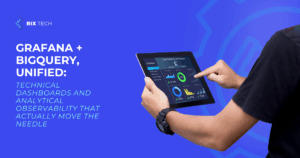Beyond the Bit: Demystifying Quantum Chips and Their Real-World Impact

Sales Development Representative and excited about connecting people
Quantum computing is no longer a far-off dream; it’s rapidly becoming a reality that could reshape how we solve some of the world’s most complex challenges. At the heart of this technological revolution is the quantum chip—a device not meant to replace your everyday laptop, but to tackle problems that classical computers simply can’t handle efficiently. So, what exactly makes a quantum chip so special, and how are today’s innovations pushing the boundaries of what’s possible?
What Is a Quantum Chip and Why Does It Matter?
Imagine a computer chip that doesn’t just process information as ones and zeros, but as many possible states at once. This is the core idea behind a quantum chip. Instead of conventional bits, quantum chips use qubits, which operate under the quirky rules of quantum mechanics. Thanks to a phenomenon called superposition, a single qubit can hold multiple states simultaneously. This ability allows quantum computers to manage calculations involving countless variables—something that would take classical computers centuries to process.
A quantum chip, therefore, acts as the powerful engine in a quantum computer. It’s not about doing your everyday tasks faster; it’s about enabling entirely new solutions for fields like cryptography, advanced chemistry, and optimization. The potential for innovation is huge, and as research advances, quantum chips are inching closer to mainstream applications.
The Building Blocks: Qubits, Entanglement, and Decoherence
At the heart of any quantum chip lies the qubit, but not all qubits are created equal. Leading the charge are several types:
- Superconducting Qubits: Used by Google’s Sycamore and Willow chips, these offer high speeds but face challenges when it comes to scaling up.
- Cat Qubits: Caltech’s Ocelot chip employs these, which are designed to suppress errors and maintain stability longer than most other qubits.
- Topological Qubits: Microsoft’s Majorana 1 chip is exploring this promising approach, aiming for ultimate error resistance and long-term stability.
What makes qubits extraordinary isn’t just superposition, but also entanglement. When two qubits are entangled, a change to one instantly affects the other—no matter how far apart they are. This interconnectedness enables quantum computers to solve optimization and search problems with unprecedented speed.
However, qubits are fragile. Environmental noise can cause decoherence, where their delicate quantum state collapses. That’s why quantum error correction is a front-and-center concern in quantum hardware design. Without robust error correction, the promise of quantum computing quickly fades.
Quantum Hardware Showdown: Who’s Leading the Quantum Race?
The quest for practical quantum computers has ignited a global race among tech giants:
- Google: Their Willow chip leverages superconducting qubits for high-speed computations, excelling in tasks like random circuit sampling. However, scaling up remains a challenge.
- Microsoft: With Majorana 1, Microsoft is betting on topological qubits for unmatched stability and error resistance.
- Caltech: The Ocelot chip’s “cat qubits” are a breakthrough in error suppression, keeping quantum states intact for longer and opening new doors for reliable quantum processing.
Each approach offers unique advantages and trade-offs. For a deeper dive into how quantum technologies are revolutionizing business, check out how AI and data science are shaping the business landscape.
When Does Quantum Computing Make a Difference?
While quantum chips sound revolutionary, they aren’t a fit for every task. In reality, most day-to-day computing—email, spreadsheets, web browsing—remains best handled by classical processors. Quantum chips shine when it comes to:
- Optimization: For complex logistics or financial models, quantum computers can evaluate a vast number of variables in parallel, finding optimal solutions faster.
- Cryptography: Algorithms like Shor’s could break current encryption methods, making quantum-safe cryptography a priority for the future.
- Molecular and Material Simulations: Modeling molecules at the quantum level accelerates drug discovery, materials innovation, and energy research.
- AI Acceleration: Quantum mechanics can process high-dimensional datasets, potentially boosting machine learning and artificial intelligence performance.
- Quantum Sensing: Ultra-precise measurements, such as gravitational wave detection or advanced imaging, rely on quantum technology.
If you’re curious about the broader business impact, our guide on exploring AI PoCs in business offers practical insights.
Quantum Error Correction: The “Cat-Mode” Advantage
So, why is error correction such a big deal? Qubits are notoriously sensitive—even the tiniest environmental disturbance can throw off their calculations. This is why engineers at Caltech’s Ocelot chip project are pioneering “cat-mode,” leveraging cat qubits to suppress errors and stabilize quantum states long enough for meaningful computation.
Without error correction, a quantum computer is little more than an expensive physics experiment. Effective error suppression strategies are essential for practical results, often measured in mere milliseconds before decoherence sets in. As quantum chips evolve, error correction remains the key challenge—and the primary focus for researchers worldwide.
What Quantum Chips Won’t Do
Let’s set realistic expectations: quantum chips won’t make your Netflix stream smoother or help you draft emails any faster. Their superpower lies in solving specialized problems that are out of reach for even the fastest classical systems. If you’re hoping for instant productivity boosts across the board, quantum computing may not be the solution you need—at least, not yet.
The Future: Quantum-Classical Hybrids
Rather than replacing conventional computers, quantum chips are designed to work alongside them. Companies like Google and Microsoft are leading the way with hybrid cloud platforms, where quantum processors handle specialized tasks while classical servers manage the heavy lifting. This collaborative approach is likely to define the next phase of computing, blending the best of both worlds.
As we look forward, the path to mainstream quantum computing will require patience, precision, and plenty of engineering ingenuity. But with each new breakthrough, we move closer to a future where quantum chips help solve humanity’s most intricate puzzles.
For more on the intersection of cutting-edge technology and business, explore our article on the role of data engineering in modern business. Quantum computing may be on the horizon, but its ripple effects are already being felt today.










